
Again, this is a very informative lecture on Avalanche Blockchain technology and its consensus mechanisms. I have learned the purpose and work of this project. Now, try to answer all the questions. I hope it will help you to understand this project entity and work.

Explain in detail X-Chain, C-Chain and P-chain.
The Avalanche platform is designed for the purpose of increasing the scalability of the system. This is why the Avalanche is comprised of three blockchain technologies. X-chain, C-chain, and P-chain are the blockchain technologies that are included. These technologies make the Avalanche a faster project than others. We will discuss these technologies in the following.
X-Chain
X-Chain stands for Exchange Chain. X-Chain is one of the core blockchain technology that is used in the Avalanche project. It is basically used for the purpose of creating the new token. Several activities related the token creation, exchanging tokens, and paying fees regarding token creation are handled in the X-Chain.
The Avalanche consensus algorithm is used in the operations of X-Chain. In the X-Chain Technology, the transactions are executed rapidly. It is because the nodes in this system are assembled parallelly. They do not need to wait for other nodes to complete the process. The nodes in the X-Chain put a final check on the transactions are validated by other validators.

C-Chain
C-Chain is an acronym of Contract-Chain. It is used in the Avalanche project especially for the management of the activities regarding smart contracts. We can say that it is the same as the Ethereum Virtual Machine. Snowman is the protocol that is working behind the contract chain system.
In C-Chain, we can create the new decentralized application by just copying and pasting the contract code and starting using the apps. In C-Chain, the nodes are nodes that are not assembled in parallel order. They are assembled linearly. We can easily run our project on this chain without doing enough effort.

P-Chain
P-Chain is an abbreviation of Platform Chain. It is used to manage all the activities of subnets. All the activities regarding the validator nodes and staking process are also controlled by the platform chain. P-Chain is also using the Snowmen consensus protocol.
The subnet that is controlled by the P-Chain is made up of different validators. The subnet in the Avalanche project represents the new network. Every subnet that is involved has several blockchains. That is why the speed and scalability of the system are high.

Explore the Avax Network platform. Screenshots are required.
When we visit the Avalanche platform on the web, we lang at the home page. You can see in the following figure, there are many options that we need to explore. The **Developer, Individual, and Avalanche-X are the major top menus that we need to explore. There are more than two sub-items in the dropdown of every menu.

On the homepage, there are different comparisons that they mentioned in the figure. A comparison between the Bitcoin and Ethereum blockchain is mentioned. it is about the transaction throughput, finality, efficiency, safety, and Sybil protection by consensus mechanism are enrolled. You can see that in all the qualities, the Avalanche blockchain has good performance in each comparison.
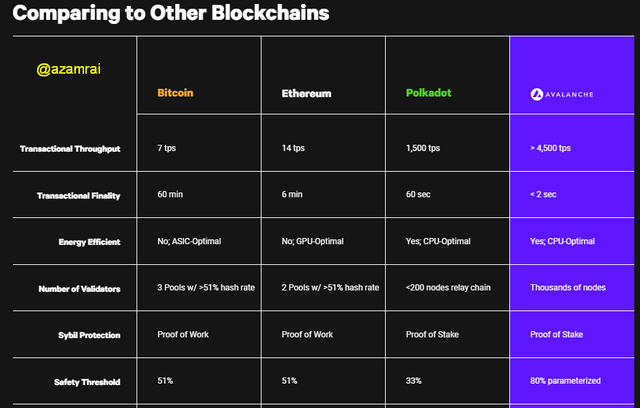

Developers
In this menu, there are two subcategories one is Validators and the second one is Start building. We will see that what is inside both buttons.
Validators
On the Validator page, we can see that the information about the validators. We can also become validators in the Avalanche platform. You can see that the information about the staked token, staking ratio, staking reward, total validators, and Total Delegations are shown in the following validator state window.
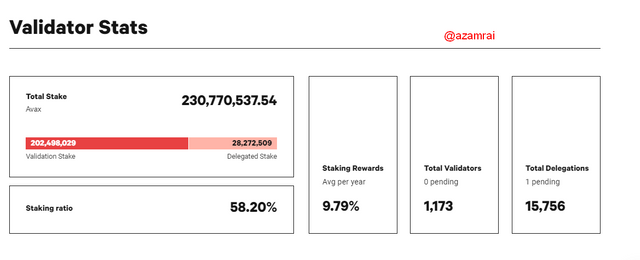

Start Building
In this tab, we can launch our own decentralized application on the Ethereum network. We can also validate on the Avalanche platform. We can also mint tokens to the Avalanche. Here the option of Integration of exchange is available. All the options, you can see in the following figure.
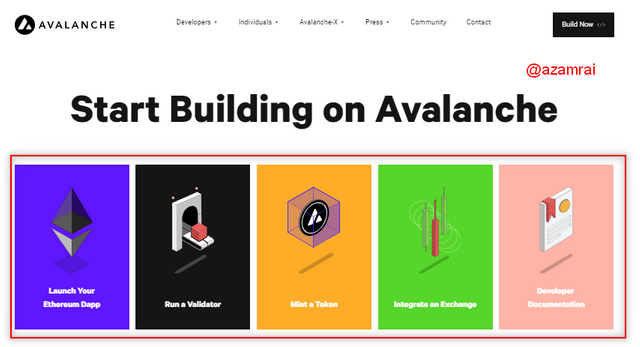

Individuals
In this menu, there are many options and functions available. The Roadmap, wallet, Explorer, and the Avalanche Bridge are the major functions that are available in this menu button. We will see what is inside every button.
Roadmap
In this, we can see the roadmap of Avalanche blockchain. We check the major milestones that the Avalanche achieved in the previous years and so far. We can check that what are enhancements that this project adopt so far.


Wallet
The Avalanche platform has its own wallet. We can create the Avalanche wallet on this platform. We can create a new wallet by just clicking on the Create wallet button. After that, click on the Create new Wallet button. Then click on the Generate Phrases button. Copy phrase and again enter the same order as you copy the click on verify button. in this way, we can create a wallet on this platform.
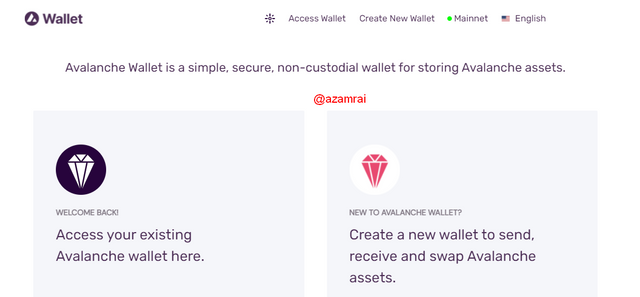

Avalanche Explorer
When we click on the Avalanche explorer button, it will bring us to the explorer of the Avalanche. Here we can see that all the information about our transaction and other transaction are recently executed. We can check the information of blocks that are recently created.


Avalanche Bridge
The bridge is used to make connections between different platforms. We can swap our tokens with other tokens. We can swap and exchange tokens after wallet connection. We can connect our Metamask and Coinbase wallet to this Avalanche bridge.
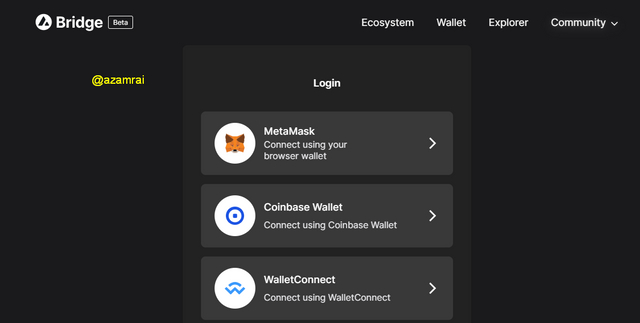

Avalanche-X
In this menu, there are two options are available. One is Open Grant and the second one is Submit a General Proposal. We will see what are the functions of both one by one.
Open Grants
Here we can create our own decentralized exchange on the Avalanche platform. We can create a mechanism in which we can safely lend non-custodial tokens like Aave. We can also create the next-generation stable token in the Avalanche platform like DAI and USDC.


Submit General Proposal
If we want to do any activity regarding building a project on creating tokens on the Avalanche platform, then we need to go through the application procedure. In this option, we can start our campaign by submitting the General proposal to the Avalanche platform.
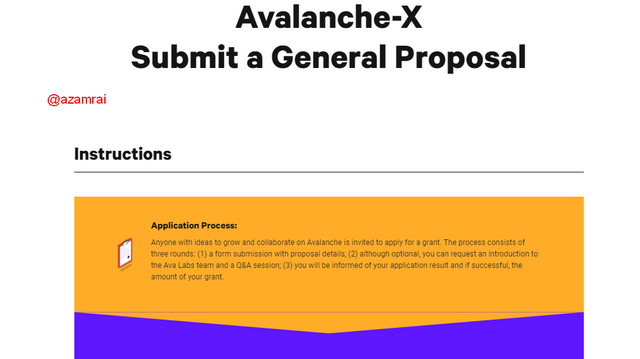


Show the last contract verified in the C-Chain network and show the Smart Contract that was generated in that direction. Screenshots required.
If we want to check the last contract that is verified on the C-Chain network then first, we need to visit the SnowTrace Block explorer. To check the last contract, you need to do the following procedure.
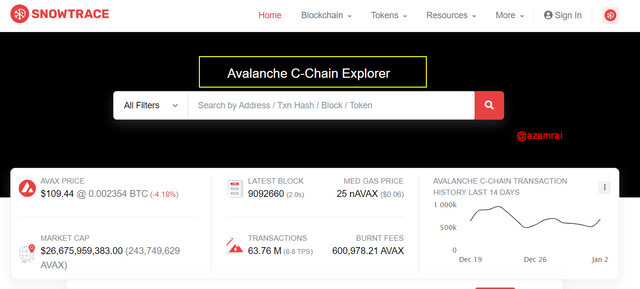
- Click on the Blockchain menu tab at the top of the window.
- Next, click on the Verified Contracts in the sub-menu.
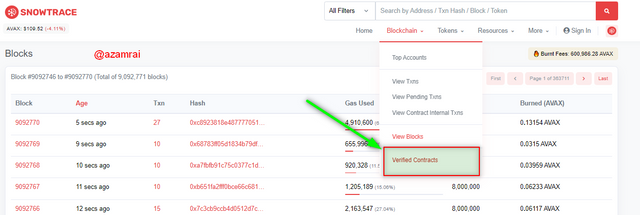

In the following figure, you can see the last contract that is verified. The Name of the Contract that is verified recently is TESTPRINTER. It is compiled by Solidity compiler.
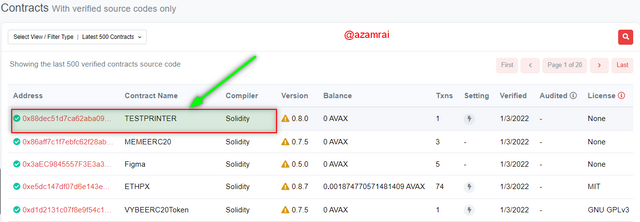

When we click on the contract name, the information regarding the smart contract is shown in the next window. In the following figure, you can check all the information about the contract that is recently increated. I also mention all the information about the contract in the table.
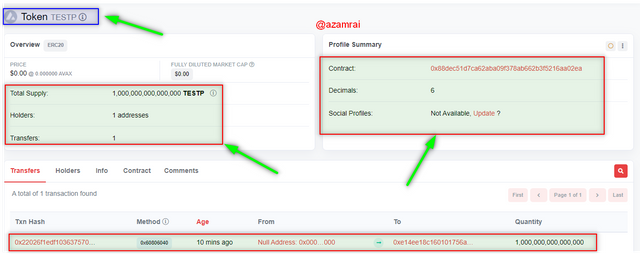

| Attibutes | Details |
|---|---|
| Creator Address | 0xE14EE18c160101756aEaE203FB92F67716B3Cf15 |
| Transaction Hash | 0x22026f1edf1036375708c76dd6a133c242ade1859476939fc2393655148b476f |
| Contract Address : | 0x88DeC51D7ca62Aba09f378Ab662b3f5216aA02eA |
| Balance | 0 AVAX |
| Token Tracker | TESTP (TESTP) |
| Supply | 1,000,000,000,000,000 TESTP |
| Holders | 1 |
| Decimal | 6 |

Explore the last block generated in the C-Chain network. Screenshots required.
If we want to check the last block that is verified on the C-Chain network then first, we need to visit the SnowTrace Block explorer. To check the last contract, you need to do the following procedure.
- Click on the Blockchain menu tab at the top of the window.
- Next, click on the View Blocks in the sub-menu.
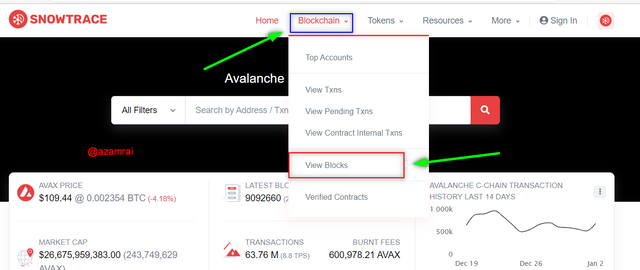

In the following figure, you can see the last block that is created 5 seconds ago. All the information regarding the block is mentioned in the figure.
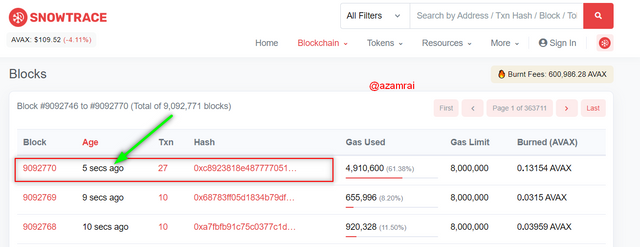

Here are more details about the transaction you can see in the following figure.
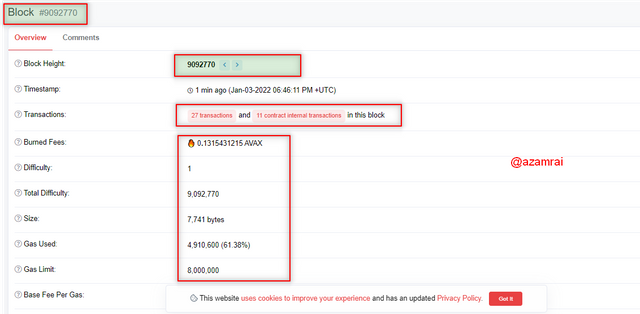


Explain in detail the Avalanche consensus protocol and the Snowman consensus protocol.
Before dive into the Avalanche protocol, we need to know the protocol that exists before the Avalanche consensus algorithm. The distributed system was introduced in the world 45 years ago. There are two types of consensus protocols are designed before Avalanche.
The Classical Protocol and the Nakamoto consensus protocol The Byzantine Fault Tolerance and Hot Stuff are included in classical protocols. In both consensus algorithms, scalability is the major issue. In the classical consensus, Robustness is not considered.
Avalanche is the third class of consensus protocols. that is designed by the Team Rocket in 2018. It has all the qualities of both classical and Nakamoto consensus protocols. It is an improved and enhanced version of the consensus protocol.
Avalanche is a probabilistic protocol like the previous protocols. But in this protocol, they reduced the error chances to the microscopic level. There is not a chance of error in this protocol. It is a unique protocol that is not dependent on the other protocol.
In this protocol, the transactions are validated very quickly. There do a need to wait for the other nodes. Because Avalanche is a combination of three blockchain technologies. And in an x-chain, the nodes are assembled parallelly. The transaction speed of Avalanche is 4500 transactions per second.
Working of Avalanche Mechanism
The Avalanche is the voting consensus mechanism. Transactions are accepted or rejected on the basis of voting. In the beginning, the transaction is validated by a single node. Then again, this decision is confirmed by the rest of the network. If they also verify this transaction then the transaction is accepted otherwise it is rejected.
First of all, the transaction is issued, and next, it is received by the validator and confirms whether the transaction is valid or not. If the transaction is valid then is moved to further processing and if it is not valid then it is ignored. The valid transaction is included in the list of valid transactions.
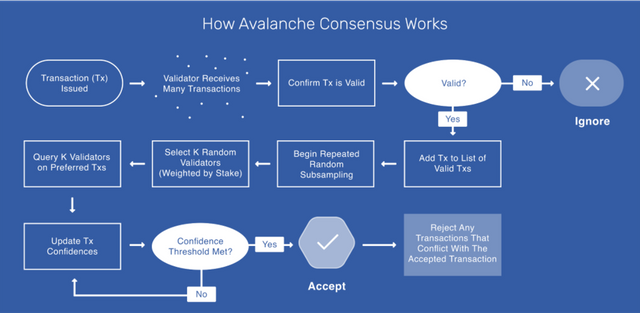
Next, the transaction is subsampling and repeated randomly. After subsampling the validator is selected on the behalf of Weighted stake. Next, the transaction is preferred by the selected validator. After that, if the transaction meets the requirement of confidence threshold, then the transaction is accepted.
Snowman Consensus Protocol
Snowman is also a consensus protocol that is an enhanced version of the Avalanche protocol. The smart contracts are created and managed with the help of the snowman protocol that is used in the contract chain. The subnets are also managed with the help of snowman protocol.
Snowman has a difference with the Avalanche protocol. The nodes in the snowman are assembled in linear order. That is why it waits for the creation of another node to create a link with. Nodes that are used in the consensus protocol are variable.

Avalanche is a unique project in the crypto market. It is a combination of three blockchain technology at a time that make this project more scalable secure and fast. It is basically working on the Proof of Stake consensus algorithm. Transactions are accepted and rejected on the basis of votes of validators.
The Validators in the voting and validation system are completely independent. When most of the nodes show an agreement signal to the transaction then the transaction is placed further processing.
